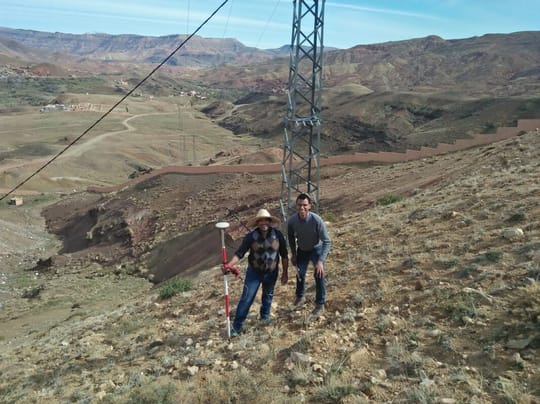The Communities in Draa Tafilalet Deserve Their Own Fruit Tree Nursery

By SAID EL BENNANI, Project Manager
Crossing the High Atlas Mountains—from Marrakech to Ouarzazate—to get to the Ighrem N’Ougdal commune, the High Atlas Foundation (HAF) decided with the Jewish community in Morocco and all of the local authorities to start planning the first fruit tree nursery in the Draa Tafilalet region. This follows the successful experience of building a community fruit tree nursery near the Akrich Jewish Cemetery for the farmers and schools of Morocco.

Monday, December 24.
The HAF team traveled from Marrakech to Ouarzazate to meet with the local authorities and other government offices and local communities to plan for the fruit tree nursery near the 1,000 year-old burial site of ‘’Rabbi David Ou Moshe.” Since long ago, Jewish and Muslim people have been living in this region with their families, in peace, tranquility, and friendship. This nursery will become like the one in Akrich: a point where the Muslim and Jewish communities will have the chance to communicate more and to build more trust between each other.

The total quarter of the cemetery is estimated at more than five hectares. The HAF will try to use almost the entire area of more than one and a half hectare to establish a fruit tree nursery to produce many local fruit trees, from which all the villages who belong to Ouarzazate province will receive trees. More than that, it will be the first fruit tree nursery in Draa Tafilalet region. However, this project is not without its challenges; the first one is that the land we will use for the nursery is located in a very steep hill. To make this project more sustainable, HAF and partners envision building terraces that could serve as a floor for the planting of the seeds to become future seedlings.

In Ouarzazate province this time, we will have a large amount of land for a nursery—about one hectare and half near the Jewish Cemetery to build as terraces. The terraces we will build in partnership with the Ouarzazate province, and will not only serve as land for the nursery, but also—because the hill is very steep—the terraces will be saving the hill from erosion. At the burial location of Rabbi David Ou Moshe there is an existing well that we can use to water the nursery. However, we will need to install a solar pump, and build a storage at the top of the hill so that we can have enough pressure to water all of the nursery. In addition, a greenhouse will be built to produce more seedlings and make ensure we have all the conditions necessary for each type of seed.

The red lines in the picture above indicate that twelve terraces can be built, as each horizontal line is fractioned into two terraces.